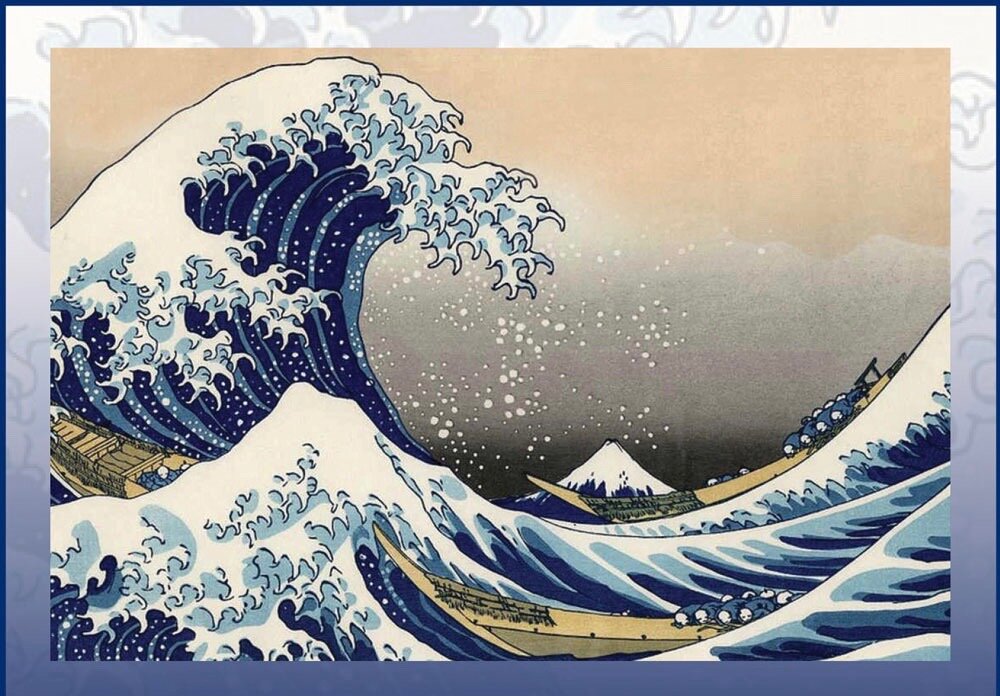In the past few weeks we have been exploring the Second Foundation of Mindfulness - Mindfulness of Feelings. We refer to this as feeling tone. In Buddhist terms, this does not refer to emotions or physical sensations as it might in English but rather to the immediate positive, negative, or neutral response we have to any experience of the mind, the heart, and body, externally or internally. One teacher notes that this immediate response happens in the first 10th of a second of the experience. Some of it is hardwired into our animal systems, some of it is conditioned and therefore available to change. And all of it leads to “downstream” experiences, each with their own feeling tone. These downstream experiences can have the effect of considerable roiling of thoughts and emotions - with, of course, their own feeling tones - in what is known as papañca or mental proliferation, a veritable cascade of thoughts and feelings that crowd into the mind.
The Third Foundation of Mindfulness is Mindfulness of the Mind in which the Buddhist instructs us on looking into our own minds and becoming awareness of this cascade, this roiling, the crowd of thoughts, emotions, memories, fantasies, moods, images, conversations, mind states, background music - the full catastrophe as Zorba the Greek famously said.
But before we dive into those confusing waters, it might be wise to spend a little time on considering an important quality that we might find useful in these investigations - equanimity. The Pali word for equanimity is upekkha which means “to look over” - "the ability to see without being caught by what we see", according to Gil Fonsdale in Tricycle, “The Perfect Balance" (Winter 2005). He goes on to say that equanimity can also refer to spaciousness, seeing the bigger picture. This allows our minds to be balanced and slightly cool, not enmeshed in the vagaries of wanting and not wanting.
That is why equanimity is so valuable as we transition from mindfulness of feeling tones of wanting, not wanting, and neutral to mindfulness of thoughts and emotions, images, memories, etc. Equanimity is considered by Venerable Analayo in Compassion and Emptiness in Early Buddhist Meditation, to be an antidote to craving or aversion. If we can expand on our capacity for equanimity, these investigations into our feeling tones, emotions, thoughts, and other mental factors will be clearer, will rock and tumble us less, will allow us to recover our balance sooner when we are swayed.
One important way we can cultivate equanimity is in relation to others - children, relatives, friends and acquaintances, people in the community, etc. When our attachments entangle us in trying to fix other people’s lives, equanimity can find expression, as Venerable Analayo writes, “in the wish that all living beings ’take care of their own happiness’, sukkhi attanam pariharantu….the attitude evoked is not indifference, but rather a form of wholesome equanimity (or balance) that allows others to take responsibility and do what they wish to do, without attempting to interfere. But at the same time, one still wishes them happiness.” (156)
Kaira Jewell Lingo in "How Equanimity Powers Love" in Lion’s Roar says, "Equanimity is full of love. It is a face of love. What’s unique about equanimity is that it helps balance the other three aspects of love so that we don’t burn out in our caring, in expressing the other aspects of love to others. It keeps us grounded. Without equanimity, our compassion can become compassion fatigue; we can outpour to an extent that we become exhausted or overly identified with the situation. Equanimity can help keep us resourced and in our center.”
She and her Dharma teacher and Christian minister dad were reflecting on the violent assault on the Capital on Jan. 6th and how the love of equanimity can give us balance. She quotes him as saying, “When we see ourselves as victims, that is the separate self. When we see ourselves as beloved, that is no-self.” She elaborates further, "When we see ourselves as beloved, full of metta, we see ourselves in everyone and everyone in ourselves, and we have a force with which to meet the ignorance, discrimination, and even the violence in others so that it doesn’t cripple us by making us hateful. When we see ourselves as beloved, we are in opposition to no one."

